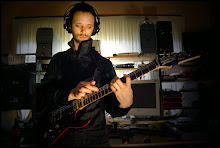Audio Arts – Major Project Semester 2, 2007 – Game Audio
**Audio Arts – Major Project Semester 2, 2007 – Game Audio**
Here is my final submission at the satisfying end of a painful and intimidating process. The main issue I have had with this project all along is the fact that I haven’t really understood the process until the last minute, making for some very frantic audio creation and intake of information regarding OSX file handling. All said and done though, I feel somewhat empowered by overcoming the adversity of the unknown world of game audio.
Video games and the programs that drive them are horrendously complicated, so in the end I think we all have done well to focus on the area of audio and bypass the nasty C-code of the various Game Audio Engines. I have created much more than my quota for the open arena level in question, and certain sounds are not being used in the ‘Kaos’ level at all. All the same, the quantity of sound I have provided enables one to play all four of the immediately accessible levels of OA with mostly ‘David J Dowling’ signature sound on display.
Trying to be too crafty with level (amplitude) setting was my only real mistake in asset creation. This was an area where knowing a little about the GAE would have come in handy, for some initial guidelines. In hindsight, I would have been better off just making all the sounds as loud as possible and reducing the amplitudes of the scant few that needed it in post-production. All these niggling frustrations are in the past now, and all can bask in the sonic gore fest of my Open Arena foley.
To anyone who is wondering about how to access the music track of the game, you must be in the menu window, press the tilda (~) key, and type “music sonic1” without the quotation marks. Sonic1 is the name of the music track that I have created for the game and embedded with the others in the package.
Remember the level ‘Kaos’ is the one I specifically created assets for, so the background ambience is tailored to this level and will not be played in others. Some of the other sounds can be heard in other levels such as water diving and splashing footsteps for instance (there is no water on the Kaos level).
Click here to link to online folder containing Process and Asset documentation and Potentially the game file, or instructions as to how to acquire it (it will be too big for the hosting company to accept so we will need to talk to Christian about organising a server spot).
Reference:
Haines, Christian. “Audio Arts – Semester 2, 2007 – Game Audio.” Series of Lectures and major project tuition presented at the University of Adelaide, August to November, 2007.










